Entries Tagged as 'Museums'
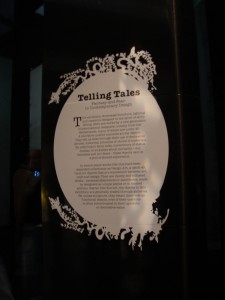
Outside the 'Telling Tales' exhibit
There were many things I adored about the V&A museum: the entrance way of marble Greek sculptures, the fashion wing including one of Princess Diana’s dresses. But what took my breath away the most was the fairy tale exhibit, Telling Tales. As many of you know, I have a childlike obsession with fairy tales and Disney movies, especially the Little Mermaid. But it is not the Disney story or the catchy songs that make me love these stories even as the years go by, but rather the way that these stories can transform a young child’s hopes and dreams into a story that suspends reality. These stories create a new world where children can hide for a little while. Who wouldn’t love that?
Well the Telling Tales exhibit at the V&A museum did just that: suspend reality and take the audience into a magical fantasy world. The works of art on display were amazing manifestations of the classical fairytales in furniture and sculpture. But that was not even the best part of the exhibit, rather it was the way that entire space was like a fairytale. Each room followed a different theme: the forest glade, the enchanted castle, and heaven and hell. To say that each of these rooms’ atmospheres matched their titles would be an understatement. When I entered the first room, the enchanted forest, all the walls and lighting matched that of a forest. It was likewise for each room. With this, the exhibit was able to achieve exactly what a fairytale is meant to: suspend reality.
The V&A museum mostly deals with exhibitions about design. Besides the suspension of reality, this show captures the elements of fairytales: dreams, hope, fear, beauty, and of course happy endings. Although the exhibit ended darkly with the heaven and hell room, I think in this way it remained grounded in realtiy. Afterall, we are not in a fairytale. And eventually the suspension of reality ends. And what better place to end it than with death, where everything ultimately ends?
Note: Photo slideshow of the V&A museum to come soon. However the Teling Tales Exhibit did not allow photography inside.
Tags: Megan · Museums
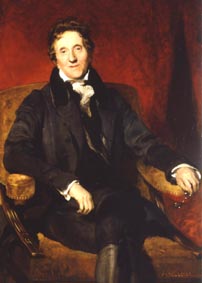
Sir John Soane, R.A.
Yesterday afternoon we decided to walk to the Sir John Soane Museum rather than taking the tube. It was only a few blocks past the British Museum and I was able to see more of the Bloomsbury neighborhood. When we arrived at Lincoln’s Inn Fields, it was easy to spot. First of all, there was a queue of people outside the gates and second, who else would have caryatids on the façade of their house but a classics-loving architect? While I appreciated the concept of the museum, (Sir John wanted to leave his home as a showcase for his antiquities and works of art) I thought it was SO crowded with his artifacts that I could barely focus on the actual architecture of the house. It was like walking into an “Antiques Roadshow” dream house. Ironically, my two favorite rooms were the ones that contained the least amount of classical antiquities, the library and the upstairs sitting room. I loved looking through his books and his paintings (the Turner on the second floor is exquisite!) because I felt that was a better way to try and gage what kind of man Sir John was. You can tell a lot about a person by what he/she reads. I loved the yellow sitting room because it was whimsical and light in the midst of all the dark wood and ancient Greek artifacts. The stained glass and the bright saffron-colored walls provided a nice contrast against the rest of the museum/house. I imagine that Sir John’s wife had a hand in decorating this area (although I can’t be sure) and he left it this way after she passed away. I only wish that there had been some sort of guide that I could have used to navigate through the house or a curator I could have talked to. Obviously, Sir John loved classical sculpture and architecture, and his collection is truly impressive, but I would have liked to see more of the floor plan. Also, I wonder what Soane’s sons could have done to persuade him to even turn the home into a museum. On the homepage all it says is he was “deeply disappointed by the conduct of his two sons.” Any thoughts on that? I really enjoy exploring the places where people lived. It’s fascinating to me… What were they like? What was their daily schedule? What room did they spend the most time in? To any future visitors, make sure you venture down into the basement aka “the crypt” to check out the sarcophagus of Pharaoh Seti I. This is definitely a non-conventional museum. To be perfectly honest, what it lacked in curatorial flair, it made up for in dedication to preservation. The Sir John Soane museum was a welcome change from the halls of slick marble and crowds of tourists that have been a staple of the larger institutions. Sometimes it’s the places off the beaten track that make the biggest impression. While this museum was not my favorite attraction of London, It does showcase the importance of exploring the smaller, less popular areas. Next stop—Chancery Lane!
Tags: Grace · Museums · Uncategorized
-
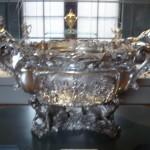
-
Giant Silver Punch Bowl at the V&A
-

-
The Theatre and Stage Exhibit at the V&A
-

-
Brandon and I before Arcadia
-

-
Outside the National Theatre
This Monday I experienced my first bank holiday. Because of our full schedule here this month it didn’t seem any different from any other day here. This held true until I wandered down Tottenham Court Road and realized that just about everything was closed. With just a handful of museums open I decided to use the time to visit one I hadn’t been to yet: The Victoria and Albert Museum.
I had been told great things about the V&A museum by classmates who had been there within the past few days so I went in with pretty high expectations. After seeing the first exhibit based on Great Britain from the 1600’s-1800’s I was not impressed. Boy would this opinion change. I walked up to the first floor and entered a giant gallery filled with all kinds of sculptures. This was easily the best sculpture gallery I had seen so far in London and I spent about 15 minutes walking through it and admiring. As I continued to walk through the entirety of the first floor I was absolutely astounded by the variety of exhibits this museum had to offer. Some highlights included a detailed exhibit on fashion, a room filled with giant monuments including a cross and decorative pillars and an exhibit on the Middle East and its textiles.
After a good hour spent on the first floor I ventured up to the third floor of the museum. As soon as I stepped into the silver exhibit I was in awe. I spent at least a half an hour admiring and studying silver used and manufactured in different time periods and parts of the world. My favourite was a giant punch bowl made entirely of silver. There were many other exciting exhibits on the third floor including one on theatre and a print exhibit featuring one of my late grandmother’s favorite authors, Beatrix Potter. My last stop on the third floor was the jewelry exhibit. In addition to being aesthetically pleasing the exhibit featured a timeline of jewelry that was considered fashionable since the start 18th century and a few small personal collections.
I could have spent at least another three hours in the Victoria and Albert museum but I decided to hold off for another day. The thing that impressed me the most about this museum was the variety of exhibits. Just about every other museum I had visited so far in London I knew what to expect going in. The V&A featured anything and everything and had no qualms about doing so. I found this both refreshing and exciting.
The rest of my bank holiday was filled with a trip to the theatre. Upon request the entire class got “dolled up” for a performance at the Duke of York’s Theatre near Leicester Square. We saw Arcadia, a Tom Stoppard play that turned out to be both extremely funny and thoughtful. The class seemed a bit skeptical of how the play would be at first glance since we couldn’t see much of the stage but as soon as the curtain went up things improved immediately. Neil Pearson’s performance as Bernard Nightingale was unmatched and fit perfectly with Samantha Bond’s character of Hannah Jarvis. The play was not only entertaining and made me think but also fit in perfectly with our program since it contrasted the humanities and sciences.
Ever since seeing Troilus and Cressida last Friday I have been craving anything to do with the theatre. This happened to be perfect timing as we spent all of Tuesday focusing on the stage. In the morning we had a fantastic conversation with Rick Fisher , a Dickinson alum of 1979 and a recipient of two Tony Awards, most recently for his work on Billy Elliot: The Musical. It was fascinating speaking with a Dickinson graduate who had simply worked his way up from the very bottom of the London theatre scene.
In the afternoon the class toured the National Theatre. Our tour guide took us through all parts of the building including the three main theaters. The Olivier, which is the largest, seats about 1100 people and does not have a bad seat in the house. My favorite part about the Olivier was that the main stage could be divided in half and raised and lowered at any time. In addition to the Olivier we also viewed the Cottesloe Theatre a black box that has the capability of being transformed into just about anything. All of the chairs in front of the stage can fold down and the risers they sit on can be pushed in creating additional stage space. The tour guide described a play that had been recently performed in the Cottesloe where the actors were mixed in with the audience. This amazed me. We also viewed the Lytellton Theatre where our class will be viewing the Pitmen Painters together next week. The other part of the tour that really amazed me was the props department. From the crocodile in Peter Pan to a severed head no prop was impossible to create.
After the tour of the National Theatre many of us were so excited about coming back that we decided to go see Shakespeare’s All’s Well That End’s Well, the play taking place in the Olivier currently. My reaction to the play was mixed. The theatre itself was amazing. The props, sets and lighting blew my mind and the acting was good overall. Despite all of these positives I didn’t particularly enjoy the actual play, especially the ending. It seemed impractical to me and unlikely to happen in real life, even 500 years ago.
Overall learning about theatre in London has been a lot of fun. In addition to seeing a variety of shows we’ve gotten a chance to see London theatre from many different perspectives. From the traditional globe experience to hearing about small fringe productions from Rick Fisher to a tour of all three main facilities at the National Theatre we have received a wide perspective of how this popular activity has influenced the city as a whole and in all different ways, shapes and forms.
Tags: Henry · Museums · Theatre
September 2nd, 2009 · 3 Comments
One thing that I have been noticing a lot about London is the accessibility and services available for people who are disabled or handicapped in some way. Much like what you would tend to expect from American cities, there are handicap accessible entrances, ramps, elevators, and automatic doors leading to many of the major museums and tourist attractions around London. However, I have observed less-than-wonderful wheelchair-friendly services in the Tube stations.
Looking at the Underground map, there are only 9 stations within Zone 1 that have step-free access from the platforms to the outside world. Now, I grant that the map shows that the bigger stations or those with rail stations attached tend to have wheelchair accessible facilities, but there are still a number of problems. First, there’s the gap to mind, which while it is not beneficial to the elderly or buggy-pushers, seems to be a very large potential problem for people in wheelchairs and using crutches to get over. Secondly, with the current construction projects occurring at many of the major Tube stations, some facilities that would normally be easier to maneuver around are currently out of order. The only saving grace of the transport system for those movement-impaired seems to be the bus system. From what I have noticed of the buses, the majority of them are fitted with a hydraulic system that either allows the bus to be lowered curbside or a platform for a wheelchair.
Despite my criticisms of the Tube as a vehicle of transport for people in wheelchairs, London has managed to greatly surprise me in the leaps-and-bounds of services for other handicapped peoples. When I was at the British Museum the other day, I noticed a sign that mentioned that there is a Touch Tour for people who are blind or visually impaired. I’ve never encountered anything like this before, but think that it is a brilliant idea! This tour allows them to touch specific objects in certain sections of the Museum in order to get an idea of what the art from that culture “looks” like. Accompanying these objects were plaques in Braille explaining the object they were “looking” at.
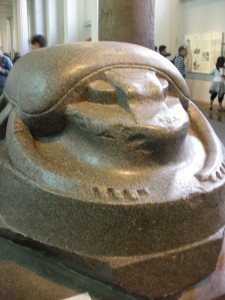
Scarab from the Egyptian section of the Museum - on the Touch TourSign for the Blind Touch Tour
I was struck again by the services provided for disabled/hard-of-hearing peoples tonight at the performance of All’s Well That Ends Well at the National Theatre. One of the last things I was expecting when I entered the theatre was to have a closed captioning screen for the play! Despite this service being aimed at those deaf/hard-of-hearing people, I benefited greatly from being able to see some of the dialogue I missed either by zoning out or simply not being able to hear. Although I did find the screens slightly distracting at times, I think that it was a brilliant idea that should be implemented at many more theatres in the world.
Overall, I am finding London to be a very mixed city of accessibility and services for people who are disabled or handicapped in some way. I think that the Tube stations need some work, but as construction is constantly being done on them, I know that they will be improved upon eventually. On the other hand, I think that the Touch Tour and the closed captioning in the theatre were both wonderful ideas that should be implemented in the States and around the world if they haven’t already. Any thoughts or observations on services and accessibility?
Tags: Kelley · Museums · Theatre
Tourist-a person who travels for pleasure or culture, usually sightseeing and staying in hotels (Webster Dictionary).
Tourism. I am a tourist. A tourist in England, specifically in London.
For the past two weeks it has been an interesting feeling to be identified as a tourist, especially because I have never had an experience or ever held a title of “a tourist.” And upon arriving to London and feeling comfortable in this big city, I felt like I was exploring a borough in New York City. Tourism. Although throughout time people like to shed the idea and a title of being a TOURIST I, on the contrary, have been acknowledging and embracing my expedition. Let me explain…
My journey towards loving being a tourist began upon our entrance to the Westminster Abbey. The fact that I felt like a tourist might have been due to all of the other tourists surrounding me, gazing at all of the famous philosophers, artists, writers, politicians laying in their tombs beneath our feet. This visit has definitely imprinted itself in my mind. When again will I be able to stand close to Isaac Newton, Charles Dickens, T.S. Eliot, Elizabeth I, Charles Darwin and many others who have had made such amazing impacts on OUR civilization and MY world today. I wonder what other “tourists” felt when they were taking each step across the tombs. Whether they have realized how much history existed in one structure.
Tourism. I am exploring another culture, visiting exhibitions, museums and parks that are only accessible to me on this visit to London. I am amazed.
Visiting the National Gallery was another experience where my temptation to touch the art work of Leonardo Da Vinci, Claude Monet and Van Gogh reminded me of my “touristy” ways. As I stood close to pieces of never repeated art I was staring my privilege right into the eyes . I am one of the lucky ones who gets to witness such creations. Discussing our visit to the National Gallery, my friends and I were speechless and grateful. Knowing that I was the only one in my family who actually had a privilege of not only traveling to England but also visiting museums such as National Gallery for free is indescribable. But once again I was wondering what everyone else was thinking who surrounded me? Did they realize where they were and what they were witnessing? I guess I will never know but being a privileged tourist that I am I made sure to take it all in. To completely immerse myself in art, in Da Vinci, Monet, Van Gogh, and Van Dyke. Wishing that I could feel the art with my fingertips in order to make sure it is real.
Visiting the backstage of National Theater yesterday, I came to a realization that for our continuous stay in London, I will remain a tourist. I am a person who is staying in a hotel exploring culture and my surroundings. Not only am I astonished by the things I am allowed to view but I am trying to take as much as I can in. National Theater has left me speechless, with a view of what goes on backstage, the props used, the spaces that surrender the actors when they are not on stage, the testing of the lights and music. Once again I am ecstatic to be a traveler, a tourist, an individual who is allowed to invade spaces that most do not get to see. As long as we continue to explore, I will continue to call myself a “tourist” and loving every moment.
Tags: Jeyla · Museums · Theatre
September 2nd, 2009 · 3 Comments
I’m not one for long, verbose titles; I prefer to let my artwork (if a blog post could be considered such) stand on its own. I suppose that’s why The British Museum and The National Gallery appealed to me, because these museums are arranged in such a way that the art and artifacts are privileged over their context and allowed to speak for themselves. Information is available at both museums for those who want to learn more about an individual piece, but signage is simple and audioguides are discreet.
I devoted most of my time spent at The National Gallery to the 18th-20th centuries exhibit, which featured works by Monet, Manet, Picasso, van Gogh and Degas. The piece which affected me most viscerally was Vincert van Gogh’s “Sunflowers,” a painting which I had seen many times on postcards, coasters, prints hanging on water-damaged walls or in the only remains of my mother’s abandoned art degree – in her art books. Seeing this work in person was an incredible experience. Having the opportunity to experience the thoughts, emotions and perceptions of one of the world’s most renown artists though one of the world’s most renown pieces of artwork affected me very deeply. What struck me about works in both museums, but “Sunflowers” in particular, was the work’s enduring relevance diachronically. Though styles and historical contexts are particular to a piece of art and remain fixed, its meaning is mutable. This, I feel, is the true beauty of art.
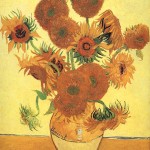
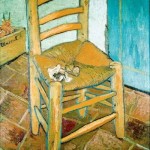

At The British Museum, I had a similar reaction to seeing and touching part of a column which came from the Parthenon. It is amazing how these artifacts have managed to remain in tact and meaningful for thousands of years. One sign that caught my attention was one which told the story of how Lord Elgin brought pieces of the Parthenon back to England in 1806. The signage, as well as other historians and archaeologists, claims that Elgin essentially saved the artifacts from further destruction and preserved them by bringing them to England. However, now that Greece has the means to afford an appropriate Acropolis Museum, there is much debate regarding the British Museum’s collection of artifacts, uncluding a number of friezes.
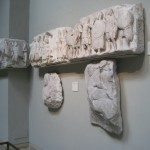

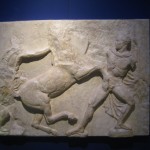
Both The National Gallery and The British Museum seem to honor artwork and artifacts over their historical context. Though considering where these pieces came from is crucial in understanding their meaning, perhaps where they are going, such as the friezes and sections of column of the Parthenon, and their relevance to our culture in the present and future is what should be more important.
Tags: Anya · Museums
August 31st, 2009 · 1 Comment
Anyone who has had a class with Professor Maggidis will know the Greek side of the Elgin Marble story quite well. According to him, the elaborate carvings were forcifully taken from the sides of the Parthenon by Lord Elgin, who did not have a right to them. The British Museum told a very different story. The current position of the Museum is that the Marbles were removed legally with the permission of the Ottoman authorities. However, the Greeks were not asked their opinion. Since the early 1980s, the Greek government has argued for the return of the Marbles to Athens. The British Museum believes that they are “a unique resource for the world: the breadth and depth of its collection allows the world to re-examine cultural identities and explore the complex network of interconnected world cultures.” This same mission statement also applies to the other artifacts of the Museum. However, “the Trustees’ view [the Elgin Marbles] are part of everyone’s shared heritage and transcend cultural boundaries.” To them, the splitting of the Parthenon Marbles between six major museums of the world allow for different interpretations to be examined. We are not so sure. What gives the British Museum the right to possess the sculptures after the Ottoman Empire dissolved and the Greek government asked for them back? Would they appreciate capstones from Stonehenge appearing in the Louvre or another major art museum of the world? Where’s the line between exhibiting cultural artifacts and claiming them as your own? You might ask us if we benefited from seeing the Elgin Marbles for free in the British Museum. Of course we did.
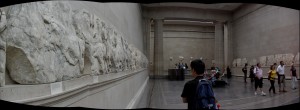
The Elgin Marbles in the British Museum - should they be here?
Continuing on our critical journey through the British Museum, we were struck by the assumption that every culture that the British encountered became part of the British cultural heritage. This was especially apparent in parts of the former Empire. This attitude was even expressed in places that dissolved from the Empire centuries ago. For example, after Buffalo Bill’s Wild West show in London, Queen Victoria was talking to Black Elk (a Native American chieftain) and said “I wish that I had owned you people, for I would not carry you round as beasts to show the people.” Although Queen Victoria probably meant well, this statement is preposterous! We think she meant that she didn’t approve of the Native Americans parading around making a parody of their culture for the entertainment of others. However, there seems to be a discrepency when looking at the colonies under Victoria’s control (India, Hong Kong, Africa, etc.).
The British Museum has made us rethink who should have posession over a cultural artifact. We believe that it’s a major grey area. Does a British archeologist digging in France have the right to the objects found, or does the French government? There are too many variables. We enjoyed almost everything we saw at the Museum and it was a great learning experience, but we couldn’t help but feel an uneasy sense of awe in the rooms where the decoration was in Britain, but the structure was elsewhere in the world.
Tags: Bureucracy · Grace · Kelley · Museums
August 31st, 2009 · 1 Comment
Imagine being in a place where all of your passions interconnect, where your heart races, you forget to breathe, your interest peaks. I have to remind myself to breathe today upon entering The Victoria and Albert Museum directly from stepping off the tube station into the museum. Deep breaths, I say to myself when I see Louis Richard Garbe’s piece, Primavera. Deep breaths I tell myself when I see the dresses by Catherine Walker worn by Princess Diana. Deep breaths when I stumble upon Joan Rhodes’s theatrical costumes, Reg Wilson’s performance photographs, sight of jewelry worn throughout centuries, breath taking carpets and other Islamic crafts. Inspiration surrounds me everywhere.
“Sculpture is a three-dimensional object with a message…”
Bob Brendle
After examining the sculptures showed at The Victoria and Albert Museum, I felt the messages sculptures were illuminating. A child and a mother, the look they share, the connection and love that exists between them. A cupid slyly planning his next attack, by preparing a bow and arrow to shoot at a King. Two soldiers fighting, the anger and determination in their stony eyes. Moving on to Islamic carpets, I am reminded of my own culture, of beautifully woven rugs and elaborately decorated vases. Not having a map at hand, I began walking through the museum, stumbling upon the silver lined plates and crafts of Paul de Lamerie and the portion of the museum which holds theatre exhibitions. Ranging from costumes worn by Joan Rhodes to the construction of the stage and backstage look at the performances in 18th Century, I was pleasantly surprised. Although the museum provided satisfaction to all of my senses, I was on the quest to finding two of my upmost passions, photography and jewelry. As I finally stepped through the doors of jewelry exhibit, I was blinded by diamonds, gold, silver, crowns, pendents. I thought “This is what heaven must look like” (at least in my world). Behind glass windows, jewels worn in 1500’s lined against the walls ranged to the present trends in jewelry. Inspiration surrounding me everywhere, I headed towards the photography section. As I entered, I was overpowered by Charles de Temple, E.R. Nele, Roger Moris and many more. The museum began acquiring pieces in 1852 and now I was in the presence of classic as well as contemporary works. One piece that particularly caught my attention was of a “Shell-shocked Soldier, Hue” by Don McCullin in 1968 taken during the Vietnam War. The simplicity yet so much emotion behind the piece and the soldier’s eyes is indescribable. My passion has ignited. Although I have always captured my surroundings and emotions through a camera lens, seeing the photography exhibit has encouraged me and made me hope that one day I can also show my work. Who knows what holds in the future for me and my photography. But for now I am planning on returning to The Victoria and Albert Museum and exploring other photography exhibitions in London such as Tom Hunter’s “A Journey Back” shown close by on Oxford Street.
I am inspired. 
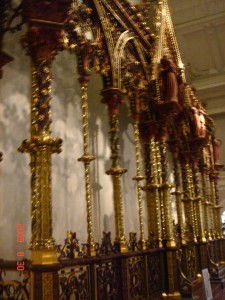
Tags: Jeyla · Museums
-
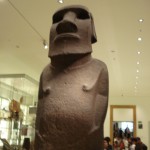
-
Part of the African Exhibit in the British Museum
-
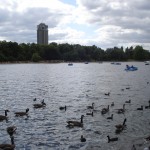
-
Hyde Park Waterfront
-

-
Regents Park
-

-
Walking towards the Notting Hill Carnival
-
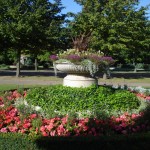
-
Flowers in Regents Park
-
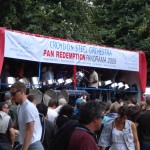
-
Steel Drum Ensemble in Hyde Park
After a busy few days nothing could be more relaxing than a day spent in a park…well two actually. In the morning we started out the day with a class in beautiful Regent’s Park located just a few minutes away from the Arran House. Our classroom discussion centered on two very different topics; Virginia Woolf’s Mrs. Dalloway and “the Blitz”. Despite the difference in subject material both conversations brought up some interesting points and I found myself seeing new perspectives on a lot of things both from my peers and from Professor Qualls.
Maybe it was just the time of day (early on a Saturday morning) but Regent’s Park had a very quiet, quaint feel to it. I realize there is still much of the park that I need to explore but from what I saw with the beautiful flower gardens and shrubbery and wide pathways it seems like it would be a great place to go for a run or relax with a book.
After a great lunch at an affordable mediterranean sandwich place with the three Andrew’s I headed out with Alli, Sarah, Mara and Kim to continue the preliminary work for our group project. We headed to Hyde Park, a place we knew would occupy most of our afternoon. Hyde Park immediately reminded me of Central Park more than any other green space I had visited in London thus far. We decided to wander towards the long expanse of water known as “the serpentine” running through the middle of the park. Along the way we passed a large group of people playing steel drums and moving to the music. The park felt alive and it was the first green space that I felt like was being utilized for large group purposes.
The water was filled with waterfowl of all shapes and sizes. There were ducks, swans and geese just to name a few. We saw that there were opportunities to rent boats for seven quid and we thought it would be a great idea to come back and do that another time. After crossing a bridge we came upon a Peter Pan statue. This was a perfect group photo op. After sitting down and taking in the scenery for a bit we headed back to the park exit content with our decision to choose Hyde as the basis for our group’s walking tour.
Sunday was another busy day. Aidan, Brandon and I headed to the British Museum where we attempted to get through the whole thing. This did not happen. We did end up getting through the Middle East, Greek, Roman, African and North American exhibits however. All in all not bad for one day. We also viewed a special exhibit the museum was featuring about living and dying. This certainly defied the plain yet effective pattern the British Museum has going for it. In one section of this exhibit there was a woman and a man featured. There was a long tapestry made out of all of the pills these two people took throughout their lifetime. Everything from vitamins to birth control to painkillers for arthritis were featured in this amazing display. There was also a display done on how different cultures around the world react to life and death and even how they bury their dead. Not only was this a fascinating exhibit but it added a whole new wrinkle to the British Museum.
After a quick break Brandon, Aidan and I decided it would be interesting to head over to Notting Hill where the annual Notting Hill Carnival was taking place. We had been warned multiple times to bring only the bare minimum and be extremely careful with our belongings. We had also been warned about the huge crowds and lack of personal space we would encounter. Unfortunately for us nothing could have prepared us for what we saw once we got off of the Notting Hill tube stop. Endless masses of humanity were walking. We had no idea where their final destination was so we simply followed. Eventually the street opened up and even more people appeared. There were floats making their way down the streets, loud music blasting and people dancing and singing. It was unlike anything I had ever seen before. People that lived in the area were charging others money to use their bathroom. There were no trash cans so litter was piling up in the streets. Other folks were walking around with coolers of beer and soda in an attempt to make a little money. Although large crowds are not my thing and I do enjoy my personal space going to the carnival was an eye opening experience. As Americans sometimes we are so driven to achieve a certain goal, meet a certain deadline, fulfill a certain quota. There has to be some sort of end reward for everything. The nice thing about the Carnival and the thing that I struggled to understand the most is that there was really no point to it. Each and every person made their experience what they wanted it to be. Some used it to express their cultural heritage, some used it as an excuse to hang out with friends or family and some simply used it to get drunk. The bottom line was that everyone was there and having a good time in their own right.
After navigating our way through masses of people we veered off the main path a little bit and found a street with some places that looked like they would be good to eat at. After completing our meals we decided we should start finding a way out of the carnival knowing that it would take us a very long time to navigate out of the crowd. For a while it seemed that no matter where we walked there were people in every direction with no apparent end in sight. Finally we approached a street corner and across the street there was traffic, the first sign that the festival had an end. We attempted to navigate our way to Paddington Station but after a decent walk opted to take the bus to Great Portland Street instead and walked back from there. The entire journey took less time than I thought it would and we were back at the Arran House by a little after 6.
As I continue to explore here I feel like I am getting a better sense of all the different expressions London has to offer. I’ve seen it’s artsy side, it’s serious side, it’s fun side and it’s theatrical side. What will I find next?
Tags: Henry · Museums
I love museums. I like to put my ipod on and wander around alone, allowing myself to really get the full experience of the art. It feels like I’m connecting to not only the piece of art itself, but to the artist and his or her experiences and emotions.
On Saturday, Amy and I took the tube to Charing Cross to visit The National Gallery. There we proceeded to immediately get lost in the extensive building, but we weren’t complaining. We wandered through room after room that held amazing works by Rembrant, Van Gogh, Monet, Leonardo da Vinci, Cezanne, and Turner, just to name a few of my favorites. I compared this museum to the Met in NYC: both are enormous, well cared for, and very popular. However, I noticed a key difference. This difference is simply that most museums here are free, with a just a suggested donation, unlike the Met which charges 10$ per visitor. I love that England honors the historical and cultural value of artwork by making it accessible to the general public. Not only could I observe famous works of art, but I could also examine the evolution of religious practices, social castes, daily life, and even fashion free of cost.
This is a pretty good segway into discussing the museum I visited today: the Victoria and Albert Museum, commonly referred to as the V & A. As a small group, we left from Euston Station to take the central line directly to South Kensington where the tube conveniently led us straight into the museum.
At first, I really didn’t know what to expect of this experience…I mean, I know very little about fashion and I simply wasn’t sure how I was going to be able to relate to the displays.
Yet, as is often the case, I was pleasantly surprised.
I walked into a room filled with some of the most beautiful sculptures I have ever seen. Though I had never heard of most of the sculptors, I was able to get really close to each of the statues and really examine the detail and expression in each.
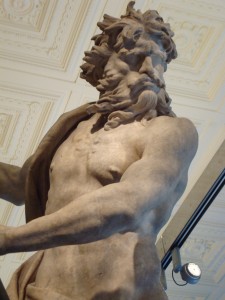
With my head phones in and the world tuned out, I strolled around. There was a huge exhibit on the evolution of clothing, another on shoes & accessories, another on fashionable metal-ware (pots, religious idols, masks, etc).
It was really cool to see how our everyday lives have been affected by the trends of the past. We often hear that things are “out of style” or “not in fashion anymore” but have we really stopped to contemplate what that means? Fashion is constantly fluctuating and changing and all of us, (whether you consider yourself fashion forward or not), are players in this game. We ourselves are walking works of art, displaying the genius of designers as they mold trend after trend, mixing past and future to create something entirely new. And that, at least to me, is fascinating. The thought that I am connected to the past through the evolution of fashion really intrigues me and I would never even have noticed this unless I’d visited the V& A museum!
Another exhibit that I thought was amazing, literally AMAZING, was located in the main lobby of the museum. It was called “Telling Tales; Fantasy and Fear in Contemporary Design” created by international designers Tord Boontje, Maarten Baas, Jurgen Bey and Studio Job who were all inspired by the classic fairy tales which they then translated into their construction offurniture. I know it sounds almost comical (like really, how can furniture be at all interesting) but I’d never seen anything like it. I posted a link a little further down that gives you a little tour.
Also in this exhibit was a frightening, but brilliant, room that entitled “Heaven and Hell”. I won’t give all of it away because I cannot adequately describe it, but the link below also can give you an idea of what to expect. However, I will say this, the lighting, color, back drops, music, and the positioning of the art are all major contributors to the overall effect of the art and are carefully constructed by the artists/museum staff. Basically, see it in person because you won’t regret it.
http://www.vam.ac.uk/microsites/telling-tales/exhibition.html
This exhibit only lasts until October 18th, and I suggest everyone see it while here. Truly, both the National Gallery and the V&A are exceptional and I really enjoyed having the opportunities to both observe and reflect on my experiences.
Tags: Maddie · Museums · Uncategorized






















